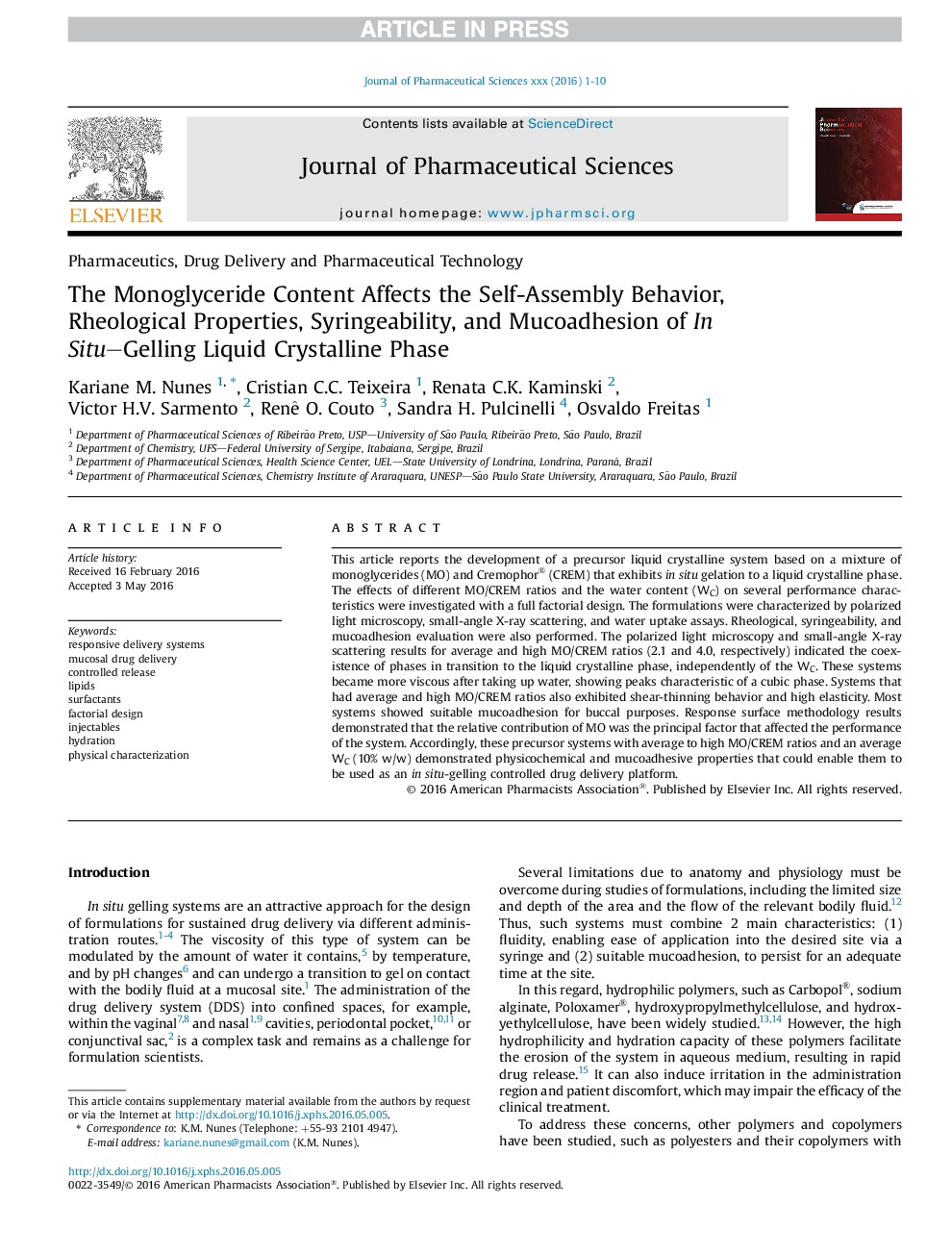| Article ID | Journal | Published Year | Pages | File Type |
|---|---|---|---|---|
| 2484326 | Journal of Pharmaceutical Sciences | 2016 | 10 Pages |
Abstract
This article reports the development of a precursor liquid crystalline system based on a mixture of monoglycerides (MO) and Cremophor® (CREM) that exhibits in situ gelation to a liquid crystalline phase. The effects of different MO/CREM ratios and the water content (WC) on several performance characteristics were investigated with a full factorial design. The formulations were characterized by polarized light microscopy, small-angle X-ray scattering, and water uptake assays. Rheological, syringeability, and mucoadhesion evaluation were also performed. The polarized light microscopy and small-angle X-ray scattering results for average and high MO/CREM ratios (2.1 and 4.0, respectively) indicated the coexistence of phases in transition to the liquid crystalline phase, independently of the WC. These systems became more viscous after taking up water, showing peaks characteristic of a cubic phase. Systems that had average and high MO/CREM ratios also exhibited shear-thinning behavior and high elasticity. Most systems showed suitable mucoadhesion for buccal purposes. Response surface methodology results demonstrated that the relative contribution of MO was the principal factor that affected the performance of the system. Accordingly, these precursor systems with average to high MO/CREM ratios and an average WC (10% w/w) demonstrated physicochemical and mucoadhesive properties that could enable them to be used as an in situ-gelling controlled drug delivery platform.
Keywords
Related Topics
Health Sciences
Pharmacology, Toxicology and Pharmaceutical Science
Drug Discovery
Authors
Kariane M. Nunes, Cristian C.C. Teixeira, Renata C.K. Kaminski, Victor H.V. Sarmento, Renê O. Couto, Sandra H. Pulcinelli, Osvaldo Freitas,
